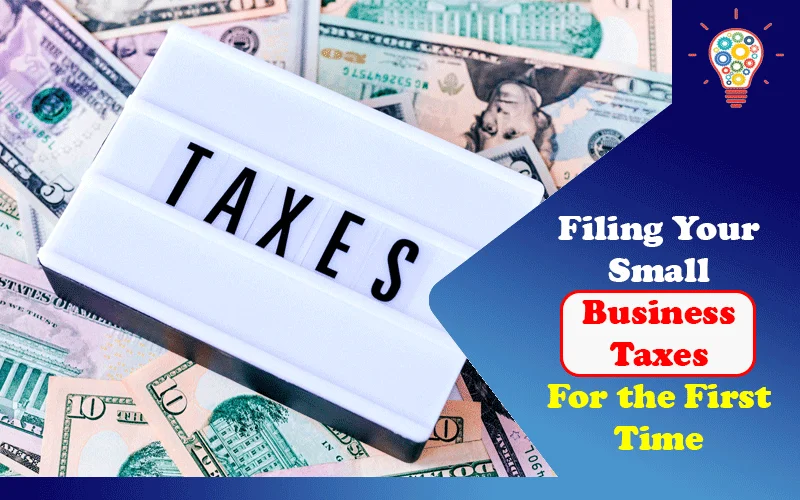Tax filing can be one of the most stressful times for a small business owner. Not only do you have to make sure all your documents have been filed correctly, but you’ll also need to make sure nothing slips through to cracks to avoid any trouble with the IRS (yikes!).
Tax filing is something every business owner should familiarize themselves with. Whether you’re a new business owner or existing business owner, the more information you have, the better your chances of making sure everything gets done right.
Why Tax Filing Matters
Your business will have tax requirements that it needs to meet. Businesses both big and small will have tax obligations that are mandatory as long as their business is legally operating. It’s similar to how individuals have tax requirements that they need to meet and fulfil annually too. If you meet all your small business tax filing requirements, you can avoid unwanted penalties and interests that are imposed by the IRS.
If you’ve had experience running a business before, you’ll know that IRS penalties can be costly and something you absolutely want to avoid. Penalties can easily reach thousands of dollars, depending on what the offence is. If you can avoid this unnecessary expense, it is worth investing the time and effort needed to familiarize yourself with your tax requirements and obligations.
How to Handle the Tax Filing Process
A quick tip to keep in mind is that every business is different. If there is anything you’re not sure of, it is always best to consult your dedicated CPA for more information or advice about your business’s situation. Let’s jump in to what areas you should focus on to get your tax filing done correctly:
- Determine Your Business Structure – The forms you need to fill and the taxes you need to pay will depend on your business structure. This is where every business differs. Small businesses, for example, will have a different structure and forms they need to fill compared to bigger multinational corporations. Some examples of business structure types include sole proprietorship, partnerships, corporations, S corporations, and Limited Liability Companies (LLC).
- Fill Up Form Schedule C – A sole proprietor small business tax filing is the same as single member LLCs. The only difference between the two entities is that an owner’s assets are legally protected when they opt for an LLC if there is ever a lawsuit taking place
Keeping your business compliant means you will have to fulfil all your tax filing obligations with a streamlined procedure.
. As the name implies, the owner has “limited liability”. The form that sole proprietors and single member LLCs need to fill is called Form Schedule C. This form is to be attached with your personal tax return. The form will show your business’s income and expenses for the year. This could either be profits or losses and they will be reported on the first page of your form. You will then pay taxes based on your total taxable income and based on your tax bracket. You will also be required to pay an additional 15% tax on your business’s profits. This 15% tax is called the self-employment tax.
- Fill Out Form 1065 for Partnership Business Structures – A partnership business structure can also be an LLC. In this case, it would be referred to as a multi member LLC. Form 1065 is a separate tax return form that is different from your personal income tax form. This form needs to be filed before you file your personal tax return form. In this form, you should include the K-1 schedule preparation. Schedule K-1 will show the share of each partner’s income or losses. For example, if the partnership earned about $5,000 in profits, then each partner (if there are two partners) will reflect a $2,500 profit on their Schedule K-1. This means that each partner must receive a Schedule K-1 from their partnership return if they want to report their income correctly on their personal tax return. Taxes will then be paid on the partner’s personal tax return and no taxes will be due with the partnership return. How much you end up paying in self-employment taxes will also depend on whether you are a general partner in the business or a limited partner.
- File Form 1120 S for S Corporations – This form is similar to Form 1065 and it must include Schedule K-1 for every shareholder within the company. Each shareholder will have a responsibility to report their share of the corporation’s profit or loss together with their individual tax returns. The difference here from the other business structures mentioned above is that shareholders in this structure don’t have to pay self-employment taxes on the profits of the business. They will only pay taxes on the compensation that is received. This is because S Corporation shareholders are supposed to pay themselves a reasonable salary. They would have to pay themselves a salary as if they were an employee of the business.
- File Form 1120 for C Corporations – C Corporations can consist of one or more shareholders. The corporation is considered a separate taxable entity. If this is your business structure, you will have to pay corporate taxes on the profits of the business. A shareholder of this entity will only pay tax if they received dividends from the corporation. This will be calculated in the individual tax return.
If you are unable to file your taxes by the deadline, file an extension with the IRS to avoid late penalties. You can extend your due date by up to six months if you do this.
Read Also: 6 Red Flags That Will Get Your Small Business Audited For Tax Abuse

